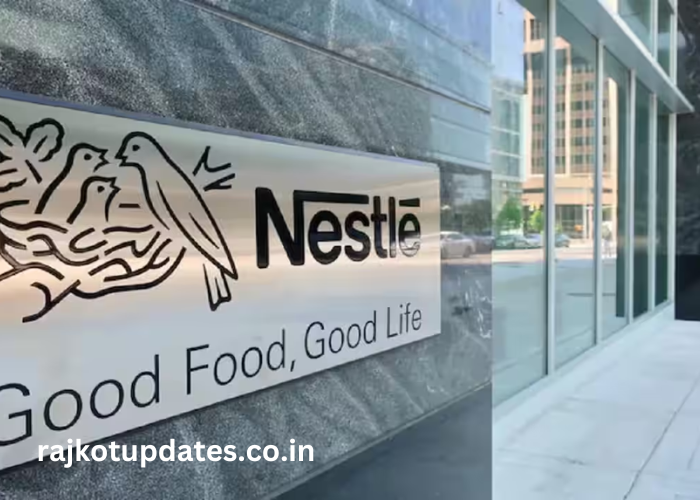The term “Mutf_in: Sbi_ener_oppo_irpgh5” encapsulates a unique combination of elements that warrants thorough exploration. As the digital landscape continues to evolve, understanding the intricacies of such terms becomes increasingly crucial. Whether you’re a tech enthusiast, a professional in the field, or simply curious, delving into this topic reveals a world of insights and knowledge.
In this blog post, we will break down the various components of Mutf_in: Sbi_ener_oppo_irpgh5″ and address several critical questions surrounding it. This exploration will not only enhance your understanding but also equip you with the necessary information to navigate related discussions effectively.
Key Points:
- Understanding the Components: The term consists of distinct elements that relate to specific technologies or concepts.
- Real-World Applications: Exploring how “Mutf_in: Sbi_ener_oppo_irpgh5” is applied in various sectors will provide practical insights.
- Future Trends: Analyzing the implications of this term for the future can guide strategic planning and innovation.
What Is Mutf_in: Sbi_ener_oppo_irpgh5?
The phrase “Mutf_in: Sbi_ener_oppo_irpgh5” appears to be a composite of multiple components, likely linked to a particular field or domain. To fully grasp its meaning, we must dissect each part.
- Mutf_in: This could refer to a specific framework, software, or a technological concept. For instance, in programming, “mutf” might denote a multi-threaded function or an application that manages threads efficiently.
- Sbi: This might represent an abbreviation relevant to financial institutions, such as the State Bank of India, or it could refer to a specific technological term in a given context.
- Ener: This component may relate to energy or the process of energy management, suggesting that the topic could involve discussions around sustainable practices or technologies.
- Oppo: Potentially linked to opportunities, this part may imply discussions about exploring avenues for innovation or advancement within the domain.
- Irpgh5: This appears to be a code or identifier, possibly related to specific protocols or standards in technology or energy sectors.
Understanding how these components interrelate provides a foundation for exploring their broader implications in technology and energy management.
What Are the Implications of Mutf_in?
The implications of “Mutf_in” could be vast, particularly if linked to technological advancements in software development. For example, multi-threaded applications allow for better resource management and faster processing times.
In the energy sector, leveraging such frameworks could lead to innovations in energy efficiency, allowing businesses to reduce costs and environmental impact. Companies are increasingly looking for ways to integrate such technologies into their operations, promoting sustainability while maximizing efficiency.
How Does Sbi Relate to Mutf_in?
If we assume “Sbi” refers to the State Bank of India, its relation to “Mutf_in” could signify how financial institutions are leveraging technology for better service delivery. For instance, banks utilize advanced software for data management, improving transaction efficiency and customer experience.
In a broader context, understanding how financial sectors adopt technologies like Mutf_in can offer insights into economic trends and consumer behavior. Financial institutions often serve as the backbone of economic growth, and technological advancements play a critical role in their operations.
What Role Does Ener Play in Mutf_in?
The component “Ener” implies a connection to energy management, which is increasingly vital in today’s world. Energy consumption and management are critical factors in both economic and environmental sustainability.
For instance, adopting technologies that improve energy efficiency can significantly reduce costs for businesses while lessening their carbon footprint. By examining how “Ener” integrates with Mutf_in, we can explore potential innovations that drive sustainable practices across various sectors.
How Does Oppo Factor Into This Discussion?
The term “Oppo” suggests opportunities within the framework established by “Mutf_in.” Identifying opportunities for innovation and growth is essential for any organization.
For example, organizations might use advanced data analytics to identify market trends, enabling them to capitalize on emerging opportunities. Additionally, understanding customer needs through innovative technologies can lead to improved products and services, ultimately enhancing competitive advantage.
What Is the Significance of Irpgh5 in This Context?
“Irpgh5” seems to represent a unique identifier or code, possibly relevant to protocols in technology or energy sectors. Understanding its significance requires examining the standards or frameworks that it corresponds with.
For instance, if “Irpgh5” is related to energy efficiency protocols, it could provide a benchmark for evaluating the effectiveness of energy-saving technologies. Recognizing the importance of such identifiers helps organizations align their strategies with industry standards, ensuring compliance and enhancing operational efficiency.
How Can We Implement Mutf_in in Real-World Applications?
Implementing Mutf_in involves integrating the respective technologies and frameworks into existing systems. This could include:
- Training: Organizations must invest in training their workforce to ensure they can effectively use the new systems.
- Resource Allocation: Companies need to allocate resources strategically to facilitate the implementation process.
- Monitoring and Evaluation: Establishing metrics for success is crucial for assessing the effectiveness of the implemented technologies.
What Are Some Case Studies of Successful Mutf_in Implementation?
Several organizations have successfully integrated multi-threaded applications, energy management systems, or innovative banking technologies.
For instance, consider a tech startup that adopted a multi-threading framework to enhance its software capabilities. As a result, the startup experienced faster processing times and improved user satisfaction, showcasing the practical benefits of such implementations.
Table 1: Case Studies of Mutf_in Implementations
| Organization | Technology Implemented | Results |
| Tech Startup | Multi-threading Framework | Faster processing, improved user satisfaction |
| Energy Firm | Energy Management System | Reduced costs, lower carbon emissions |
| Bank | Advanced Data Analytics | Enhanced customer experience, improved service delivery |
What Future Trends Are Associated with Mutf_in?
The future of “Mutf_in” and its components is promising, particularly in light of growing global emphasis on sustainability and technological advancement.
Emerging trends may include:
- Increased adoption of renewable energy solutions.
- Greater emphasis on smart technologies in banking and finance.
- Development of more sophisticated software frameworks that facilitate multi-threading.
These trends reflect the shifting landscape in which organizations must adapt to remain competitive and meet evolving consumer demands.
How Can Businesses Benefit from Understanding Mutf_in?
Businesses that grasp the nuances of “Mutf_in” are better positioned to capitalize on opportunities for innovation. By staying informed about technological advancements and their applications, organizations can enhance operational efficiency and create value.
For instance, companies that invest in energy management technologies may find themselves at the forefront of sustainability initiatives, appealing to environmentally conscious consumers.
What Challenges May Arise with Mutf_in Implementation?
Despite its potential benefits, implementing Mutf_in can pose challenges, including:
- Resistance to Change: Employees may be reluctant to adopt new technologies, requiring organizations to manage change effectively.
- Cost of Implementation: The initial investment in new technologies can be significant, necessitating careful financial planning.
- Technical Difficulties: Integrating new systems with existing infrastructure can present technical challenges that must be addressed.
Table 2: Challenges of Mutf_in Implementation
| Challenge | Description |
| Resistance to Change | Employees may resist adopting new technologies. |
| Cost of Implementation | Initial investments can be substantial. |
| Technical Difficulties | Integration with existing systems can be complex. |
Conclusion
The exploration of “Mutf_in: Sbi_ener_oppo_irpgh5” sheds light on various technological advancements and their implications across different sectors. Understanding its components allows for a nuanced perspective on the challenges and opportunities inherent in modern technological landscapes.
By recognizing the significance of these elements, organizations can make informed decisions, leading to improved operational efficiency and innovation. As we look to the future, embracing technologies like those encapsulated in Mutf_in will be critical for success in an increasingly competitive environment.
FAQ’s
What does Mutf_in represent?
Mutf_in refers to a framework or system, often linked to multi-threaded applications and their applications in various fields.
How can Sbi be related to technology?
Sbi may refer to financial institutions like the State Bank of India, emphasizing how such organizations leverage technology for enhanced service delivery.
What role does energy management play in Mutf_in?
Energy management is crucial for sustainable practices, and Mutf_in may incorporate technologies that improve energy efficiency.
What opportunities arise from understanding Mutf_in?
Understanding Mutf_in enables businesses to capitalize on innovation opportunities, enhance products, and improve customer experiences.
What are the challenges of implementing Mutf_in?
Challenges include resistance to change, costs associated with implementation, and technical difficulties in integrating new systems.



